Finding the sweet spot to soak in Hoi An’s old-world charm can be a head-scratcher for many wanderers. So, when’s the prime time to wander these historic lanes? Let’s unravel the mystery together with Vietnampeace.com!
1. Climate & Weather: When Does Hoi An Blossom?
Hoi An, snug in Quang Nam Province along the central South Central Coast, dances to the tune of its tropical monsoon beats. Expect sultry, sun-kissed days with a coastal breeze typical of seaside haunts.
Here, nature plays its seasonal symphony in two distinct acts: dry season and wet season. Dry days strut their stuff from New Year’s until July’s curtain call, while the rain takes center stage from August onward. So, when does Hoi An shine brightest? Seasoned travelers often pencil in their Hoi An escapades between February and April, when conditions are just right.
With its tropical flair, the dry season is the quintessential time for a Vietnamese escapade. Picture-perfect days sans rain are tailor-made for outdoor adventures, making exploration and leisure a breeze.
Yet, the best time to visit Hoi An is a matter of personal taste. The rainy season brings its magic and allure. Let’s dive deeper into these two seasons’ ebb and flow to see which sings your travel tune best.
2. Which Season is Best to Visit Hoi An? – Hoi An’s Dry Season
2.1. How Long Does Hoi An’s Dry Season Last?
Hoi An’s dry season starts in February and stretches all the way through August. During this time, the average temperature hovers around 33°C, offering beautiful, sunny skies with occasional refreshing rain showers in early summer. So, when is the best time to visit Hoi An? According to the travel experiences of many tourists, visiting Hoi An during the dry season is ideal for outdoor activities, sightseeing, photography, and indulging in cultural and culinary experiences.
2.2. Top Attractions in Hoi An’s Dry Season
So, where should you go, and what exciting activities can you enjoy during Hoi An’s dry season? Let’s find out:
– Take a Romantic Boat Ride on the Hoai River: The picturesque Hoai River runs through the heart of Hoi An’s ancient town, offering a dreamy setting. You can purchase a boat ticket and cruise along the river, admiring the sparkling Hoi An skyline illuminated by lanterns at night. Especially on the 1st and 15th day of the lunar month, you can join in releasing lanterns into the river, symbolizing hopes for good fortune.
– Explore Hoi An’s Ancient Town by Bicycle: Cycling around the ancient streets is popular among many tourists. The experience of pedaling through the quaint lanes, surrounded by vibrant paper lanterns, is sure to relax and immerse you in the local atmosphere.
– Swim and Sunbathe at An Bang Beach: One cannot miss out on a beach day during the summer season in Hoi An, especially at An Bang Beach. Spend a whole day swimming, feasting on fresh seafood, and participating in various beach activities. It’s guaranteed to create joyful memories with friends and family.
2.3 What are the Advantages of Traveling to Hoi An During the Dry Season?**
– Less Rain, Mostly Sunny Days: The majority of the months are filled with sunshine and warmth.
– Exciting Outdoor Activities: Plenty of enjoyable outdoor activities await, making it a thrilling time to explore.
– Perfect Photo Opportunities: The weather won’t hinder your picture-perfect moments, making it ideal for Instagram-worthy check-ins.
– Abundance of Events and Programs: Numerous events and programs are organized during the tourist season.
3. Which Season is the Most Beautiful to Visit Hoi An? – Special Features of Traveling During the Rainy Season
If you’re not keen on the hustle and bustle of the dry season, which season should you choose to visit Hoi An? Let’s discover the intriguing aspects of traveling to Hoi An during the rainy season.
3.1. How Long Does Hoi An’s Rainy Season Last?
The rainy season in Hoi An starts in September and lasts until February of the following year. It often brings a cool, tranquil ambiance compared to the dry season. However, the rain showers can be prolonged and persistent. The weather is conducive to leisurely activities.
3.2. Attractions and Activities That Attract Tourists During the Rainy Season
Traveling during the rainy season may not be as lively and bustling as the dry season, but Hoi An’s rainy season offers unique and enjoyable experiences. To fully immerse yourself in the serene and meaningful rainy season, consider:
– Chilling at Hoi An’s Cafés: Hoi An’s cafes highlight the old town experience. The cozy atmosphere and the sound of raindrops provide the perfect setting for relaxation and conversation with friends.
– Checking in along narrow streets and alleys: Hoi An becomes even more beautiful and romantic during the rainy season. Take advantage of the quieter streets and capture the most stunning photos.
– Indulging in Diverse Local Specialties: A food tour is excellent for your rainy season trip to Hoi An. The city offers a wide variety of delicious dishes and culinary experiences waiting for you to explore.
– Visiting Hoi An’s Ancient Houses: As a UNESCO World Heritage Site, Hoi An preserves many cultural and historical treasures from bygone eras. If you’re a history enthusiast or interested in artistic exploration, this experience is fascinating.
3.3. The Advantages of Traveling to Hoi An During the Rainy Season
– Creates a Peaceful and Serene Atmosphere: The rainy season brings a peaceful and gentle atmosphere without the hustle and bustle of the ancient town’s streets.
– Maintains Similar Costs or Offers Discounts: Since it’s not peak season, expenses often remain stable, or discounts are more common.
– Saves Travel Costs: Traveling during the rainy season can be more budget-friendly.
– Towards the end of the year, into the winter season, the rain diminishes, and the weather becomes slightly cooler. This is suitable for romantic and melodious music events.
3.4. Disadvantages of Traveling to Hoi An During the Rainy Season
– Flooded Roads: Roads are prone to flooding, making transportation challenging.
– Decreased Availability of Summer Food and Drinks: Beachside food stalls may reduce in number, offering fewer street food options like grilled meat skewers or baked potatoes.
– Cancellation of Outdoor Activities: Outdoor activities like releasing lanterns or traditional games may be canceled due to heavy rain.
– Impact on Photography: Heavy rain may affect capturing beautiful photos.
– Diminished Visibility: The sky often remains overcast, making it difficult to appreciate the beauty of the lanterns on the streets.
3.5. Items to Bring During the Rainy Season
– Hooded Jacket, Umbrella, and Raincoat: Convenient rain gear to keep dry.
– Waterproof Shoes: Shoes suitable for rainy conditions to prevent slipping.
– Warm Clothing such as Scarves and Sweaters: For cooler temperatures.
– Waterproof Bags or Cases for Electronic Devices: To protect your gadgets from water damage.
4. What is the best month to go to Hoi An? Travel experience by month
Besides which season is best to go to Hoi An , which month is best to go to Hoi An is also an issue that needs attention. Because just imagining which season is suitable is still not really clear. If you want to experience the best trip to Hoi An, you should plan in detail. Please refer to monthly tourism features in Hoi An.
4.1 Traveling to Hoi An from January to March – Festive Atmosphere of the Lunar New Year
At the beginning of the year, it’s the transition from winter to spring. The weather during this time is quite pleasant, ranging from 18 to 23 degrees Celsius, making it cool and comfortable. Occasionally, there are light rain showers, but overall, it’s enjoyable. Particularly, this is the time for the Lunar New Year, so the festive atmosphere is livelier than usual.
Tourists can participate in the lantern festival on the Hoai River on the full moon night of the lunar new year. Additionally, there are many local activities such as vibrant decorations in red to celebrate the largest traditional festival of the year, Tet Nguyen Dan.
4.2 Traveling to Hoi An from April to June – Peak Tourism Season
If asked about the most beautiful time to visit Hoi An, the period from April to June cannot be overlooked. Hoi An is transitioning to the dry season during this time, so the weather remains mild and the average temperature is between 26 and 31 degrees Celsius.
This period marks the beginning of the peak tourist season, so it’s advisable to book accommodations early. Tourists can engage in various activities such as beach bathing, snorkeling at Cu Lao Cham Island, and visiting Bay Mau coconut forest.
4.3 Traveling to Hoi An from July to September – Pleasant Autumn Weather
From July to September, it is still the dry season and the busiest period. During August and September, as autumn approaches, the number of visitors decreases as the rainy season begins.
Nevertheless, there are still plenty of activities and experiences during this time. August and September are suitable for visiting cultural heritage sites such as the Japanese Covered Bridge, Hoi An pottery village, and My Son Sanctuary.
4.4 Traveling to Hoi An from October to December – Tranquil Rainy Season Tourism
From October to the end of the year, the rainy season begins. There is less sunshine, and rain showers are frequent throughout the day. The weather gradually becomes cooler, signaling the onset of the rainy season in central Vietnam. This time is often suitable for those who enjoy the quiet and melancholic atmosphere of the old town.
5. The Best Month to Visit Hoi An – What You Need to Know
After reading through this, you may have already answered the question of the best time to visit Hoi An for yourself. Most tourists choose the dry season as the ideal time to travel to Hoi An, specifically from January to March.
Moreover, from April to September is also a beautiful time to visit Hoi An. During these months, many lively activities take place, and the weather ensures a more enjoyable trip.
6. How Many Days for a Hoi An Trip? Ideal Itinerary
The ideal duration for a Hoi An trip depends on the preferences of the traveler. You can combine your trip to Hoi An with Da Nang as both cities are located close to each other and are famous tourist destinations. Here are some suggested itineraries:
6.1 One-Day Hoi An Trip
Itinerary 1: Explore the old town in the morning. Spend the afternoon enjoying the cool sea breeze and indulging in local specialties. In the evening, participate in the lantern festival on the Hoai River and admire the lanterns.
Itinerary 2: Explore the old town and enjoy a food tour during the day. In the evening, engage in activities like playing Bai Choi (a traditional game), sitting at a sidewalk café, strolling around the streets, and buying souvenirs for family and friends.
Itinerary 3: Have fun at VinWonders in the morning. In the afternoon, experience the Bay Mau coconut forest and Thanh Ha pottery village. In the evening, visit ancient houses and assembly halls.
6.2 Two-Day Hoi An Trip
Day 1: Explore the old town – Enjoy local cuisine at Hoi An Market – Take a boat ride on the Hoai River and release lanterns – Play Bai Choi and participate in cultural activities.
Day 2: Enjoy VinWonders – Relax at An Bang Beach and savor seafood – Visit the hottest café for young people.
6.3 Three-Day, Two-Night Hoi An Trip
Day 1: Explore the entire old town of Hoi An – Food tour – Check out the hottest cafés in Hoi An – Take photos with colorful paper lanterns – Try local drinks like Mot and enjoy riverside cafés.
Day 2: Visit Cu Lao Cham Island – Snorkel and engage in water activities – Enjoy seafood on the island – Shop at the market.
Day 3: Cycle around the old town – Enjoy the breeze on Cua Dai Bridge – Buy gifts for family and friends.
7. Exploring Hoi An Cuisine
In addition to knowing the best time to visit Hoi An, experiencing Hoi An cuisine is also worth it. Hoi An is known for its diverse and delicious specialties. No visitor can resist trying dishes such as Cao Lau, grilled skewers, Hoi An chicken rice, Phuong bread, and wonton.
8. What to Buy as Souvenirs in Hoi An?
After a trip, it’s essential to have souvenirs to give to family and friends. In Hoi An, there are many souvenir options, including snacks like sesame candy, su sê (candied fruits), and gai lai cakes. Souvenirs such as brass items, to he (traditional toys), handicrafts, Hoi An silk, and wooden toys are also popular. Lanterns, in particular, represent the characteristic image of the ancient town.
9. Where to Stay in Hoi An? Some Affordable Hotels and Resorts
Once you’ve decided on the best time to visit Hoi An, finding accommodation is essential. You can choose hotels inside the old town for easy exploration, or if you prefer a spacious beachfront area, resorts along An Bang Beach are an excellent option.
Tourists can easily find hotels and resorts at locations such as Cua Dai Beach, An Bang Beach, inside the old town, VinWonders Nam Hoi An, depending on their travel itinerary.
10. Things to Keep in Mind When Traveling to Hoi An Independently
Hoi An is a famous tourist city known for its hospitality and friendliness toward visitors. However, there are still some things to keep in mind:
– When visiting heritage sites in Hoi An, buy tickets at the ticket counter. Visitors can choose to visit 5 out of 12 attractions listed on the ticket. Guided tours for groups of 8 or more come with free tour guides. Keep the ticket until you finish your tour.
– Dress neatly and respectfully when visiting historical sites and museums.
– Avoid pushing and shoving, especially in crowded areas and ticket booths.
– Always ask for prices before making purchases to avoid overcharging.
– Beware of scams and avoid being coerced into buying goods.
In conclusion, the provided content offers a comprehensive guide to exploring the charming city of Hoi An, Vietnam. From highlighting the best times to visit based on weather and festivals to suggesting ideal itineraries for different durations of stays, the content equips travelers with valuable insights and practical tips for a memorable trip. Additionally, it emphasizes the rich culinary scene of Hoi An and suggests popular souvenirs to bring back home. Furthermore, the content emphasizes the importance of respectful behavior and awareness of local customs when traveling independently in Hoi An. Overall, this guide serves as a valuable resource for anyone planning to visit Hoi An, contributing to the promotion of tourism in Vietnam. For more information and resources on peaceful travel destinations in Vietnam and beyond, visitors can explore VietnamPeace.com.
 Hoi An is gorgeous at night (Image: ST
Hoi An is gorgeous at night (Image: ST
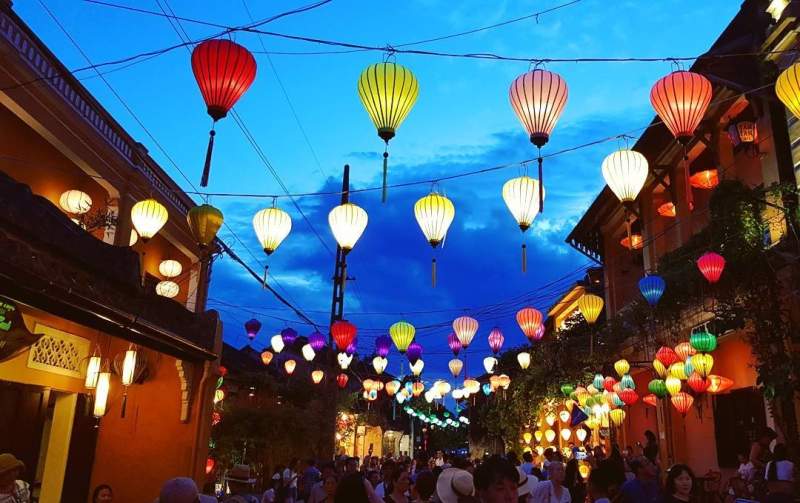 The streets are full of lanterns (Image: ST)
The streets are full of lanterns (Image: ST)
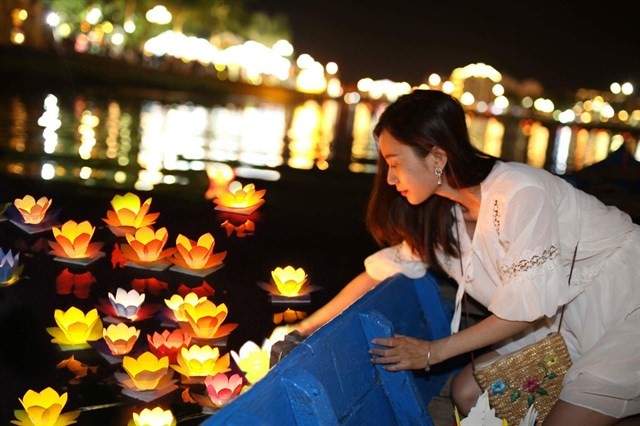 Drop the lighthouse on the Hoai River (Image: ST)
Drop the lighthouse on the Hoai River (Image: ST)
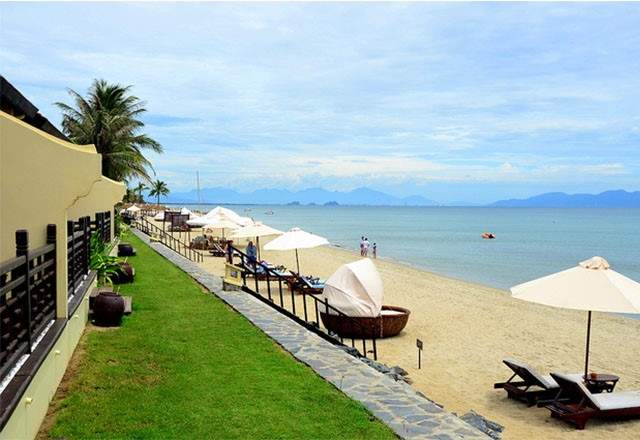 Cua Dai Beach (Image: ST)
Cua Dai Beach (Image: ST)
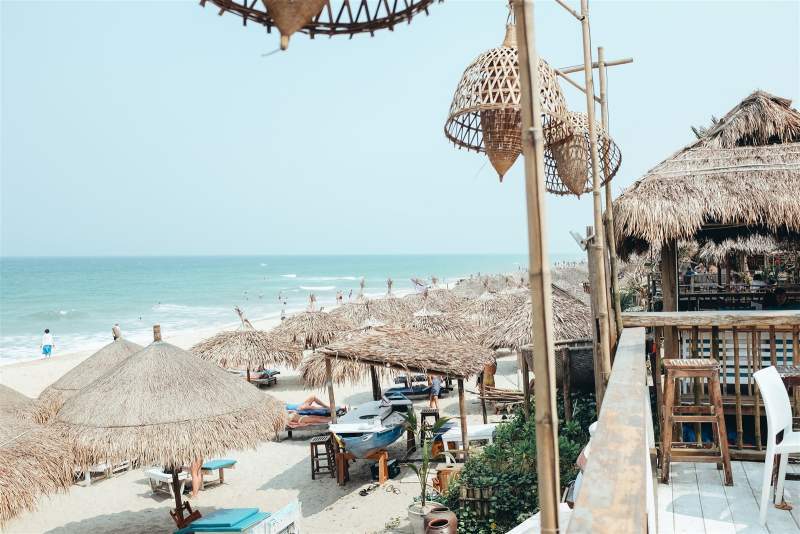 An Bang Beach (Image: ST)
An Bang Beach (Image: ST)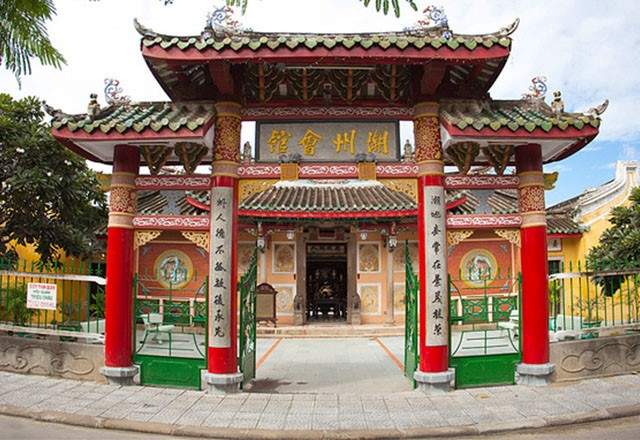 Chaozhou Assembly Hall – Hoi An (Image: ST)
Chaozhou Assembly Hall – Hoi An (Image: ST)
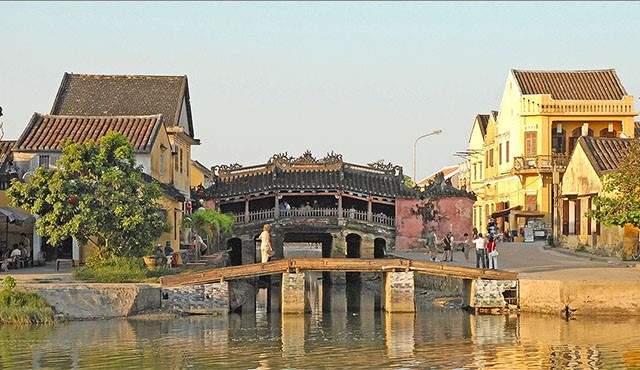 Japanese Covered Bridge – Hoi An (Photo: ST)
Japanese Covered Bridge – Hoi An (Photo: ST)
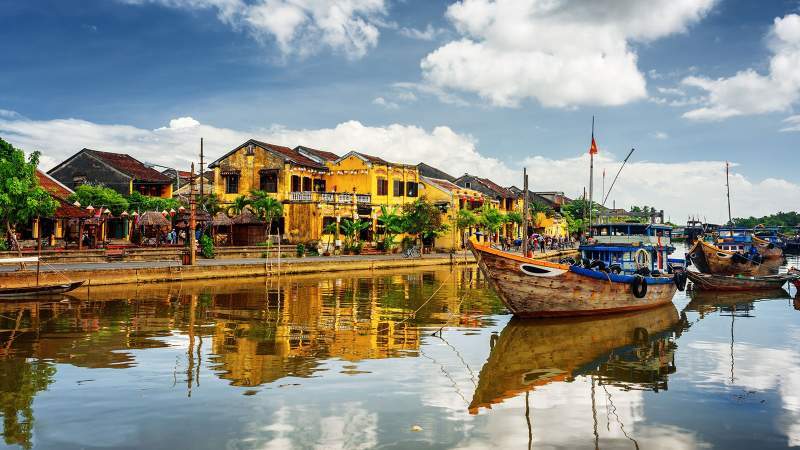 Hoi An Street (Image: ST)
Hoi An Street (Image: ST)
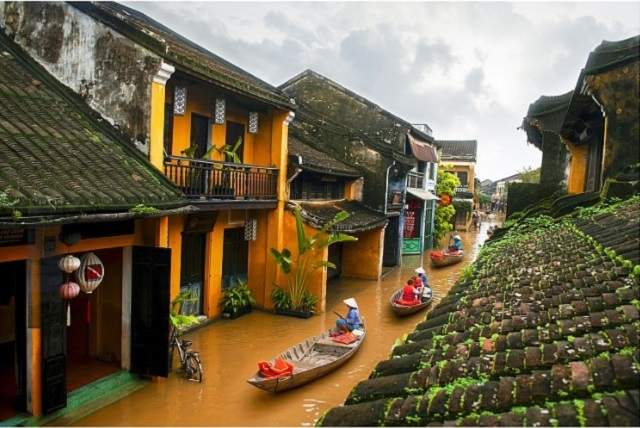 See each corner of Hoi An ancient town (Image: ST)
See each corner of Hoi An ancient town (Image: ST)
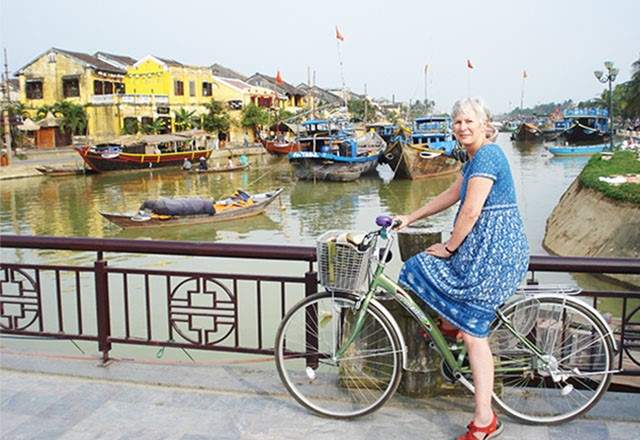 Explore the rest of Hoi An with a nice little bike (Image: ST)
Explore the rest of Hoi An with a nice little bike (Image: ST)
